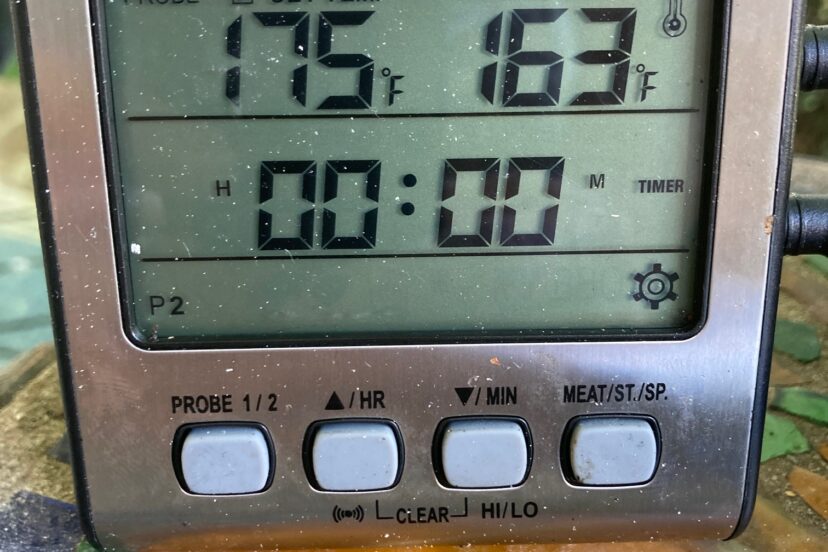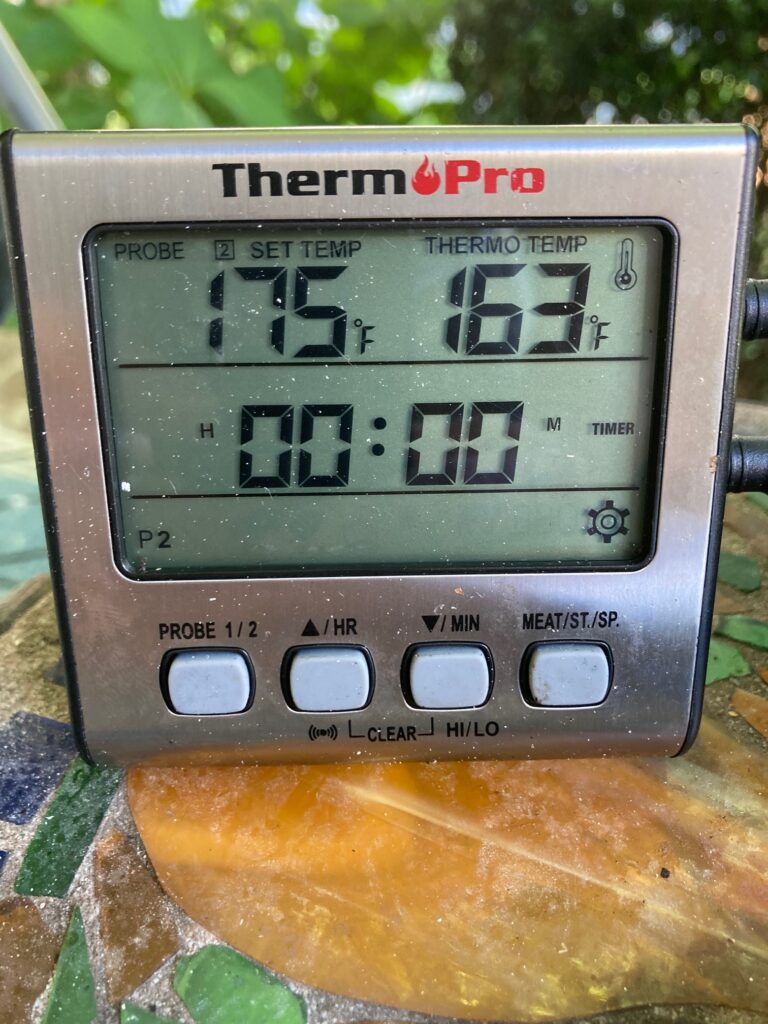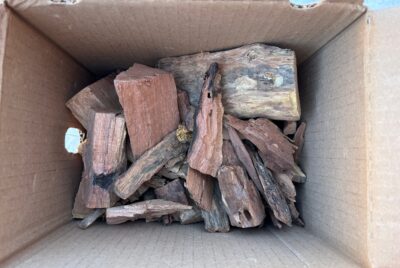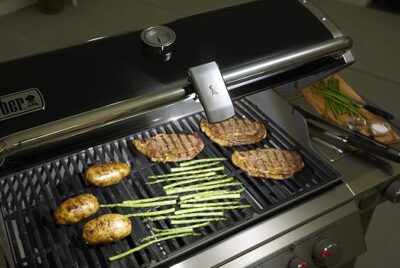Smoking Meat Temperatures
As a passionate barbecue enthusiast and seasoned meat smoker, I’ve learned that the key to mouthwatering, perfectly smoked meat lies in understanding and controlling temperatures. Today, I’m excited to share my insights on smoking meat temperatures, a crucial aspect that can make or break your BBQ game. Whether you’re a novice or a seasoned pit-master, mastering these temperature techniques will elevate your smoking skills to new heights.
Understanding the Importance of Smoking Meat Temperatures
When it comes to smoking meat, temperature is everything. It’s not just about setting your smoker to the right heat; it’s about understanding how temperature affects the meat throughout the cooking process. Let’s dive into why smoking meat temperatures are so crucial and how they can transform your BBQ experience.
The Science Behind Perfect Smoked Meat
Smoking meat is a delicate balance of time and temperature. The low and slow cooking method allows tough connective tissues to break down, resulting in tender, flavorful meat. But it’s not just about cooking at any low temperature – specific smoking meat temperatures are essential for different cuts to reach their full potential.
The magic happens when collagen, a protein found in connective tissues, begins to convert into gelatin at around 160°F (71°C). This process, known as collagen denaturation, is what gives smoked meat its signature tenderness and mouthfeel. However, each type of meat has its own ideal internal temperature for optimal doneness and food safety.
Essential Equipment for Monitoring Temperatures
To master smoking meat temperatures, you’ll need the right tools. I always recommend investing in a good quality dual-probe thermometer. One probe monitors the temperature inside your smoker, while the other goes into the meat to track its internal temperature. This setup allows you to keep an eye on both the cooking environment and the progress of your meat without constantly opening the smoker and losing heat.
Some other helpful tools include:
- Infrared thermometer for quick surface temperature readings
- WiFi-enabled thermometer for remote monitoring
- Heat-resistant gloves for safe handling
Remember, accurate temperature readings are your best friend when it comes to smoking meat. Don’t skimp on quality thermometers – they’re worth every penny. Read more!
Ideal Smoking Meat Temperatures for Different Cuts
Now, let’s get into the meat of the matter (pun intended). Different types of meat require different smoking meat temperatures to achieve the best results. Here’s a handy chart to guide you:
| Meat Type | Smoker Temperature | Target Internal Temperature |
| Beef Brisket | 225°F – 250°F (107°C – 121°C) | 203°F – 205°F (95°C – 96°C) |
| Chicken | 275°F – 350°F (135°C – 177°C) | 165°F (74°C) |
| Pork Shoulder (Butt) | 225°F – 250°F (107°C – 121°C) | 205°F (96°C) |
| Fish | 75°F – 200°F (79°C – 93°C) | 145°F (63°C) |
Let’s break this down further for each type of meat.
- Beef Brisket: Low and Slow– Brisket is the holy grail of smoked meats, and it requires patience. I smoke my briskets at a steady 225°F to 250°F (107°C to 121°C). This low temperature allows the tough connective tissues to break down slowly, resulting in that melt-in-your-mouth texture we all crave. The target internal temperature for brisket is between 203°F and 205°F (95°C to 96°C). At this point, the collagen has fully converted to gelatin, giving you that perfect tenderness. Remember, brisket will typically hit a “stall” around 165°F (74°C) where the temperature seems to plateau. Don’t panic – this is normal and can last several hours. Patience is key!
- Chicken: Safety First– When it comes to poultry, food safety is paramount. I recommend smoking chicken at a slightly higher temperature, between 275°F and 350°F (135°C to 177°C). This higher heat helps to crisp up the skin while ensuring the meat cooks through safely. The target internal temperature for chicken is 165°F (74°C). This temperature ensures that any harmful bacteria are eliminated, making the meat safe to eat. Always check the temperature at the thickest part of the thigh, avoiding the bone.
- Pork Shoulder: Patience Pays Off– Pork shoulder, often used for pulled pork, is another cut that benefits from low and slow cooking. I smoke pork shoulders at 225°F to 250°F (107°C to 121°C), similar to brisket. The target internal temperature for pork shoulder is between 195°F and 205°F (91°C to 96°C). At this temperature, the pork will be incredibly tender and easy to pull apart. Like brisket, pork shoulder will also experience a stall, typically around 160°F (71°C). Trust the process and let it ride out – your patience will be rewarded with succulent, flavorful pulled pork.
- Fish: Quick and Delicate– Fish requires a gentler touch when it comes to smoking meat temperatures. I prefer to smoke fish at a lower temperature, between 175°F and 200°F (79°C to 93°C). This lower heat prevents the delicate flesh from drying out while still imparting that wonderful smoky flavor. The target internal temperature for fish is 145°F (63°C). At this temperature, the fish will be fully cooked, flaky, and moist. Keep in mind that fish cooks much faster than other meats, so keep a close eye on it to prevent overcooking.
Tips and Tricks for Maintaining Consistent Temperatures
Maintaining consistent smoking meat temperatures is crucial for achieving great results. Here are some tips I’ve learned over the years:
Managing Your Smoker’s Heat
- Preheat your smoker: Always start with a preheated smoker. This helps stabilize the temperature before you add the meat.
- Use quality fuel: Whether you’re using charcoal, wood, or pellets, high-quality fuel burns more consistently and produces better flavor. I used to use the Walmart store brand charcoal. Now- I won’t use anything but Kingsford! It just burns hotter and longer than the cheap stuff.
- Control airflow: Most smokers have vents that allow you to control the amount of oxygen reaching the fire. More oxygen means higher temperatures, so adjust accordingly.
- Add fuel gradually: Instead of adding large amounts of fuel at once, add smaller amounts more frequently to maintain steady smoking meat temperatures.
Dealing with Temperature Fluctuations
- Avoid peeking: Every time you open your smoker, you lose heat. Trust your thermometer and resist the urge to check visually too often.
- Use a water pan: A water pan in your smoker can help stabilize temperatures and add moisture to the cooking environment.
- Account for weather: Wind, rain, and ambient temperature can all affect your smoker’s performance. Be prepared to make adjustments on cold or windy days.
- Create a heat sink: Placing a large object like a brick or cast iron pan in your smoker can help absorb and radiate heat, stabilizing temperatures.
Common Mistakes to Avoid When Smoking Meat
Even experienced pit-masters can make mistakes. Here are a couple of common pitfalls to watch out for:
- Ignoring the Stall– The stall is a natural part of the smoking process for large cuts like brisket and pork shoulder. During the stall, the internal temperature of the meat seems to stop rising, often for several hours. This happens because the meat is sweating, cooling itself down. Many beginners panic and crank up the heat, which can lead to dry, overcooked meat. Trust the process and maintain your smoking meat temperatures – the stall will pass. Wrapping will help too!
- Overlooking Resting Time– After your meat reaches its target internal temperature, it’s crucial to let it rest. During this time, the juices redistribute throughout the meat, making it more tender and flavorful. For large cuts like brisket, I recommend resting for at least an hour, wrapped in butcher paper and stored in a cooler. This resting period is just as important as maintaining proper smoking meat temperatures during cooking. I can not stress this enough!
Mastering smoking meat temperatures is a journey, but it’s one that’s incredibly rewarding. By understanding the science behind smoking, using the right equipment, and maintaining consistent temperatures, you’ll be well on your way to producing competition-worthy BBQ right in your backyard.
Remember, every piece of meat is unique, and factors like size (particularly size), shape, and marbling can affect cooking times. Use the temperatures I’ve shared as a guide, but always trust your thermometer and your instincts. With practice, you’ll develop a feel for when your meat is perfectly done.
So fire up that smoker, grab your favorite cut of meat, and start experimenting with smoking meat temperatures. Before you know it, you’ll be serving up tender, juicy, smoky goodness that will have your friends and family begging for more. Get some!
FAQs:
- Can I use the same smoking meat temperatures for all types of wood? While the meat’s target internal temperature remains the same, different woods burn at slightly different temperatures. You may need to adjust your smoker settings accordingly.
- How do I know when to wrap my meat during smoking? Wrapping, or the “Texas Crutch,” is typically done when the meat hits the stall, around 165°F (74°C) for brisket and pork shoulder. It can help push through the stall faster. Some people don’t but I ALWAYS wrap!
- Is it safe to eat smoked meat that’s pink inside? The pink color in properly smoked meat is often due to a chemical reaction with the smoke, not undercooking. Always judge doneness by internal temperature, not color.
- How can I speed up the smoking process without sacrificing quality? While low and slow is best for most cuts, you can use slightly higher smoking meat temperatures for smaller cuts or if you’re short on time. Just be sure to monitor internal temperatures closely to avoid overcooking.






